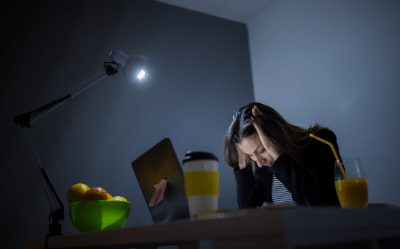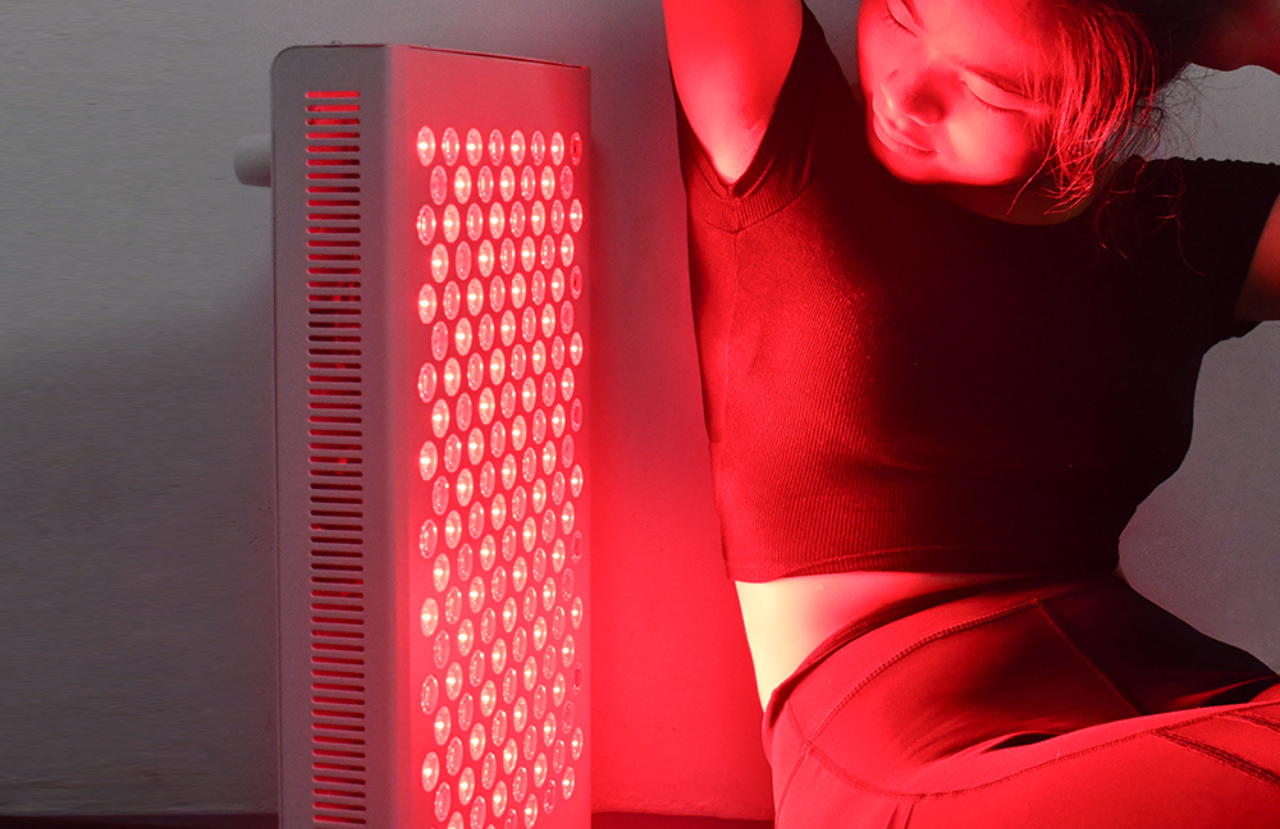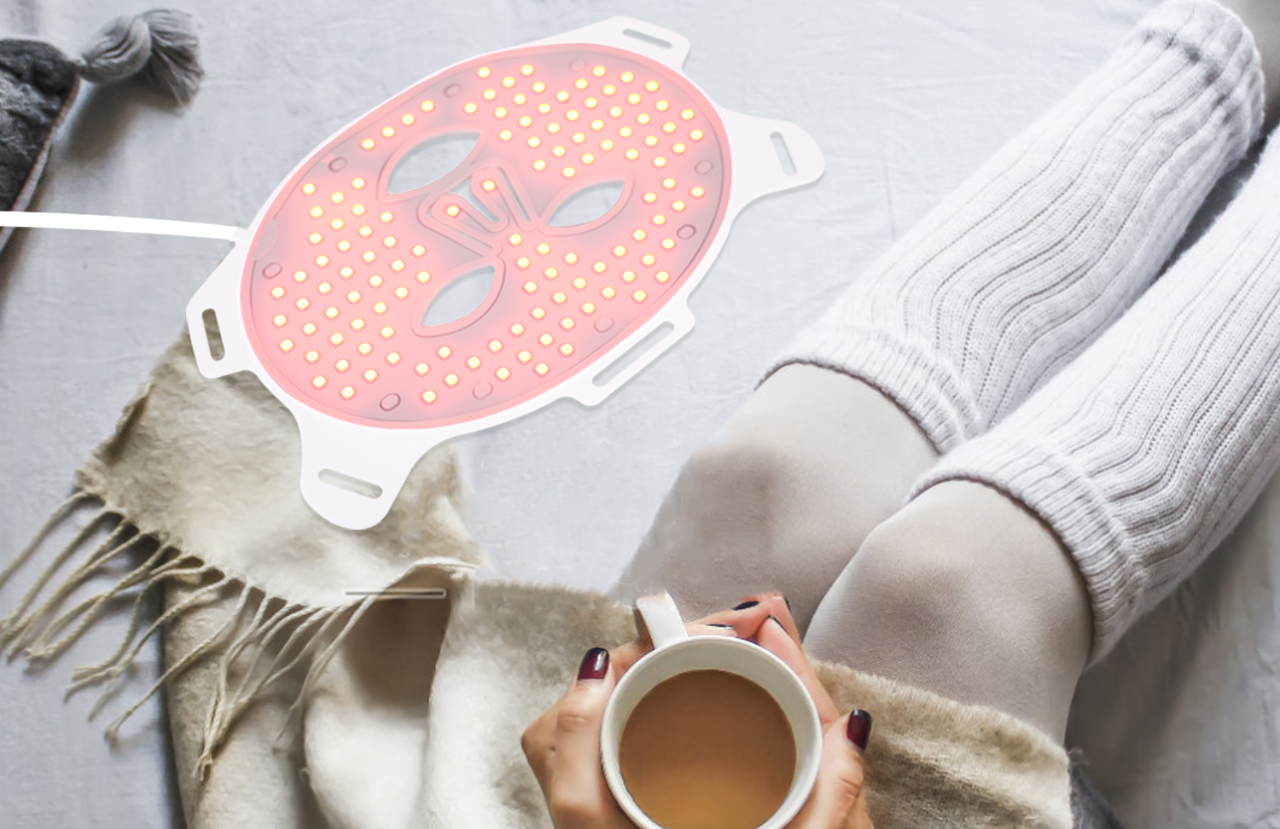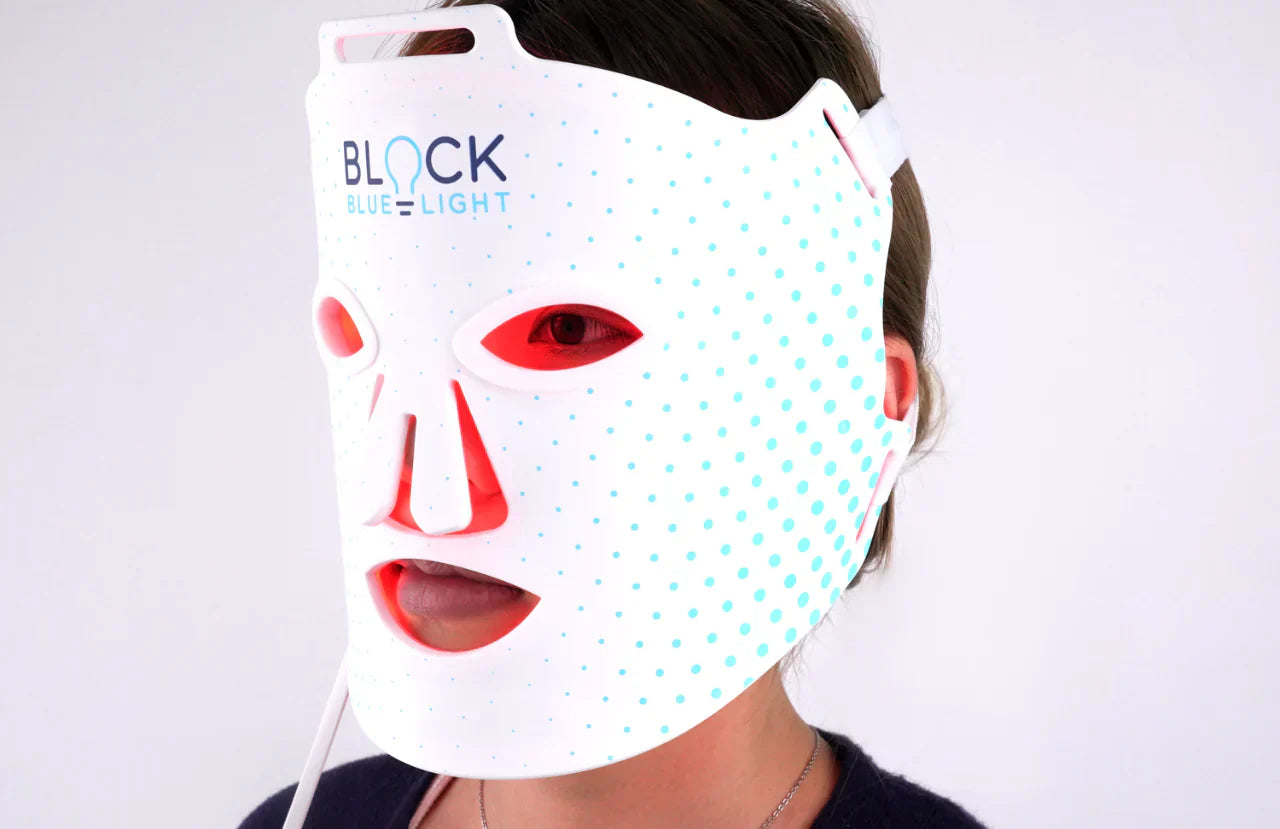If you’re weary of migraine attacks, you’re not alone. More than 4.9 million people in Australia suffer from migraines, according to a 2018 report. That’s 19.6% of the total population.
On top of that, most of those suffering from migraines are doing jobs -86%. This brings into question the relationship between blue light and migraines- especially for those who do desk jobs and have to look at screens for long stretches.
Migraines can be occasional or chronic. Chronic migraine is defined as having at least 15 days of headache a month. Chronic migraines start as less frequent episodes, and they gradually increase frequency. And you’ll be surprised to know that 7.6% of Australia suffers from chronic migraines- that’s 1.9 million people.
How are migraines and headaches different?

Migraines are a neurological disorder. A neurological disorder is a disorder that affects the brain, the network of nerves in the body and spinal cord.
If you’re having a migraine, your head will typically throb from one side (this can even be the forehead and eye area). You may feel nauseous, vomit and become increasingly sensitive to smells, sound, light (especially bright light such as LEDs or screens). Bright lights and screens all emit light in the full spectrum of wavelengths, but are concentrated in the range of 380nm-550nm which includes blue light. This brings into question the relation between blue light and migraines.
In contrast, if you have a headache, you’ll feel a pressing or tightening situation, usually on both sides of your head. The most common type of headache is a tension headache caused by stress, muscle strain and anxiety. Physical activity won’t worsen the pain (as with migraines) and you won’t be as sensitive to blue light.
What causes migraines?
Migraines aren’t fully understood but environmental factors come into play in triggering or worsening migraines. Changes in the chemicals in the brain- including serotonin have been discovered to be involved. The following are common migraine triggers;
Hormonal changes (in women): The majority of migraine sufferers are women and changing levels of estrogen before and after pregnancy, periods and menopause have been linked with migraines.
Light: Light and other visual stimuli can cause migraine attacks.
During a migraine, photophobia (increased sensitivity to light) is common. 80%-90% of those with migraines experience photophobia and become sensitive to even low levels of light.
Light, especially bright lights which contain blue light can cause migraine attacks to start. Additionally, flickering or pulsing light, glare and repetitive patterns and blue light can cause a migraine to start. Fluorescent light (such as LEDs) contains invisible pulsing, so many report that it triggers migraines.
Changes in Sleep patterns: Missing out on sleep, sleeping late at night, poor sleep quality, irregular sleep patterns and jet lag have been linked with migraines. B;ue light exposure late at night has also been linked to disturbances in sleep patterns and insomnia.
Stress: Stress causes changes in serotonin levels in the brain, which is why it can trigger migraines.
Many other factors such as weather changes, medications (oral contraceptives and vasodilators), alcohol, caffeine and food additives such as MSG may trigger migraines for some. It is thought that the above triggers result in the blood vessels to the brain becoming constricted. As a result blood flow to the brain is resulting in a migraine.
What’s the relation between blue light and migraines?
Several scientific findings show the relation between blue light and migraine attacks and headaches in people who are susceptible to them.
Why is blue light linked to migraines?
There is a distinct neural pathway from the eyes to the brain—unrelated to how vision is transmitted—that causes blue light wavelengths to aggravate headache pain and other symptoms.
The wavelength of blue light is in the range of 480nm-550nm. Exposure to this blue light induces extreme irritation, heightened pain sensitivity and throbbing, and even increased headache pain scattered across the brain.
Why does Blue Light cause Migraines?

Scientists became interested in whether blue light can cause migraines when they found out that even blind people suffer from photophobia and light-induced migraine attacks. Since blind people don’t have normally functioning rod and cone cells in their eyes, why does light affect them?
Quick refresher: Cone cells detect colours and help us see during the day, while rod cells aid in night vision. They are both present in the retina of the eye.
If these cells aren’t active in the people who can’t see, how is there still a functional connection between their eyes and their brain?
In 2002, researchers discovered a third kind of eye cell, in mice. intrinsically photosensitive retinal ganglion cells (ipRGCs) have nothing to do with vision. Instead, they sense blue light and relate changes in blue light in the surroundings, to the brain.
IpRGCs create their own light-sensitive protein called melanopsin, which is more sensitive to blue light than retinal rods and cones. Rather than controlling vision and enabling us to see colour, ipRGCs organize involuntary functions like circadian rhythms and the pupillary light reflex (PLR). These cells sense blue light in the surroundings and transmit signals to the brain. The brain responds by promoting wakefulness and releasing hormones such as cortisol which are responsible for alertness.
Since most migraine sufferers are troubled by blue light, ipRGCs are a prime suspect in the development of photophobia and migraines.
However, other research from the same lab suggests that rods and cones are also involved in photophobia.
Blue Light and Ocular Migraines:
Retinal migraine (ocular migraine) is an eye disease that causes vision loss or vision disturbances in one eye, such as lights flashing. These incidents can be scary, but they're generally harmless and brief, and the vision returns to normal later.
A minor blind spot (scotoma) that impacts the field of vision in one eye is one of the most common ocular migraine symptoms. When the blind spot grows more prominent, it becomes difficult to drive or read comfortably with the impaired eye.
One eye's entire field of vision can be impaired sometimes. In most cases, the episode is under an hour long.
While the duration of retinal migraines varies, a few people have them every few months.
Retinal migraine is a distinct disorder that can not be associated with headache-type migraine or migraine with aura, both of which impair both eyes' vision.
Is there a relation between blue light and Ocular Migraines?
Retinal migraines are caused by the blood vessels to the eye suddenly narrowing (constricting). The triggers for retinal migraines/ocular migraines are similar to migraines.
The triggers are the same as usual migraines, including stress, hormone fluctuations, particular smells, bright lights, and blue light.
Can Blue Light glasses help with migraines?

Whether blue light glasses will help with your migraines depends on what your triggers are. Suppose you’ve noticed that you are sensitive to light (photophobia), or that you use screens excessively, or you’ve suffered from digital eye strain (pain in the eyes, headaches, watery eyes and blurred vision). In that case, blue light may be a migraine trigger. If you become sensitive to light during a migraine attack or have trouble sleeping at night, blue may again be the culprit.
Blue light is a leading trigger in migraine attacks. It’s important to note that the triggering wavelengths include not only blue light (380-500nm) but high energy green light towards the end of the spectrum too. (500-550nm)
Migraine glasses operate by reducing glare, invisible flickering light, and filtering blue and green light at the high energy wavelengths (380-550nm). High-energy blue light seems to be a migraine stimulus, which makes sense given that rose-tinted lenses have been used to treat migraines for many years with certain effectiveness.
Any pair of blue light blocking glasses that doesn’t target green light (500-550nm) will be ineffective in preventing migraines. When buying a pair of blue light glasses, check for a spectral test report as proof. For the checklist of everything you need to know before investing in a pair of blue light glasses, take a look at our blog on how blue light glasses work.
References:
Gary Heiting, O. (2021, March 23). Ocular migraines Explained. Retrieved April 07, 2021, from https://www.allaboutvision.com/conditions/ocular-migraine.htm
Harvard catalyst Profiles. (n.d.). Retrieved April 07, 2021, from https://connects.catalyst.harvard.edu/Profiles/display/Person/85981
Markwell, E. L., Feigl, B., & Zele, A. J. (2010). Intrinsically photosensitive melanopsin retinal ganglion cell contributions to the pupillary light reflex and circadian rhythm. Clinical and Experimental Optometry, 93(3), 137-149. doi:10.1111/j.1444-0938.2010.00479.x
National Headache Foundation. (2018, August 03). Light and Headache Disorders: Understanding light triggers and Photophobia. Retrieved April 07, 2021, from https://headaches.org/2017/03/27/light-headache-disorders-understanding-light-triggers-photophobia/#:~:text=Light%20and%20other%20visual%20stimuli,it%20as%20a%20migraine%20trigger.
Noseda, R., Kainz, V., Jakubowski, M., Gooley, J. J., Saper, C. B., Digre, K., & Burstein, R. (2010). A neural mechanism for exacerbation of headache by light. Nature Neuroscience, 13(2), 239-245. doi:10.1038/nn.2475







